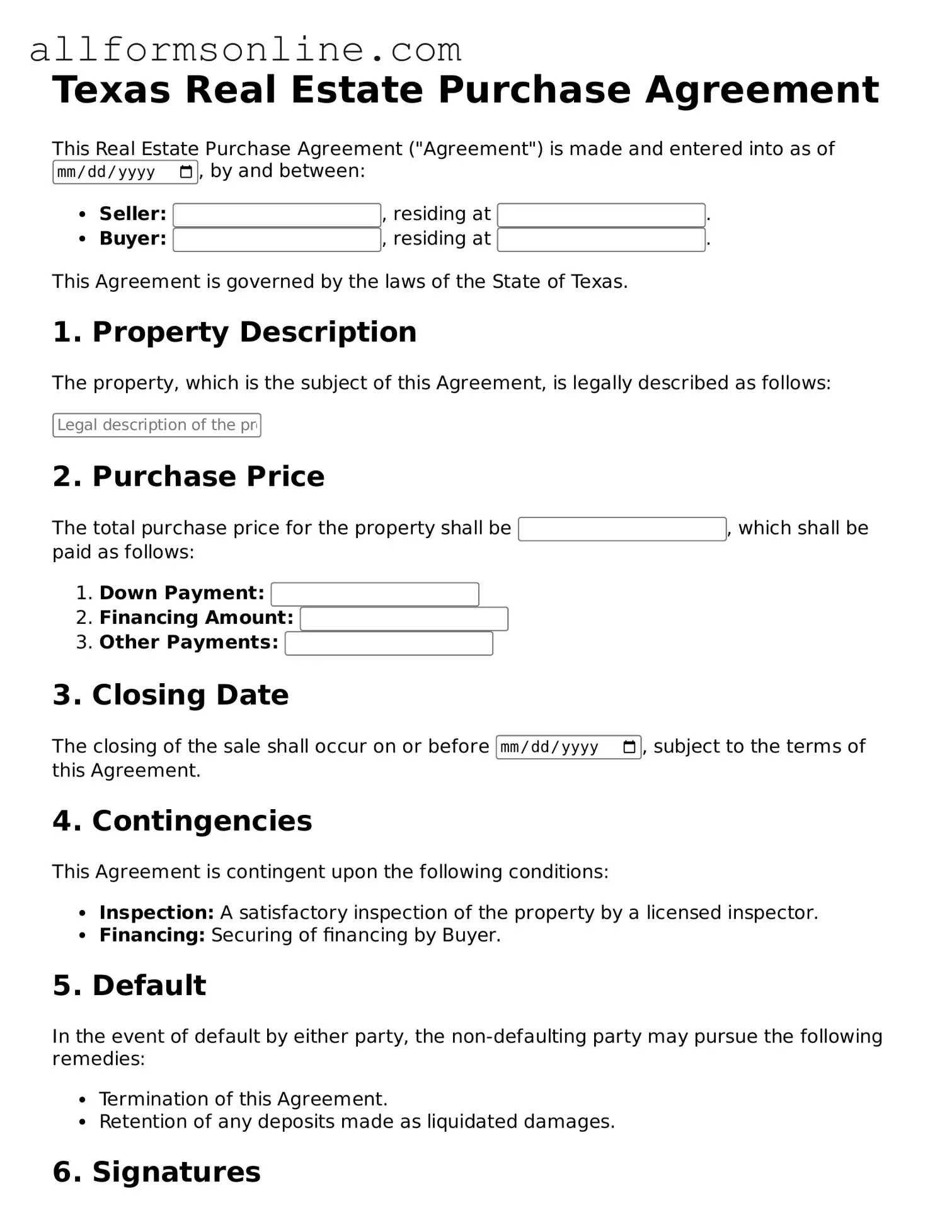What is a Texas Real Estate Purchase Agreement?
The Texas Real Estate Purchase Agreement is a legally binding document used when buying or selling real estate in Texas. It outlines the terms and conditions of the sale, including the purchase price, financing details, and any contingencies that must be met before the sale is finalized.
Who needs to use this agreement?
This agreement is essential for anyone involved in a real estate transaction in Texas. Whether you are a buyer or a seller, having a clear and comprehensive agreement helps protect your interests and ensures that all parties understand their rights and obligations.
What key elements are included in the agreement?
The agreement typically includes the property description, purchase price, earnest money amount, closing date, and any contingencies, such as inspections or financing. Additionally, it outlines the responsibilities of both the buyer and seller throughout the transaction process.
Can the agreement be modified after it is signed?
Yes, the agreement can be modified, but both parties must agree to any changes. This is usually done through an addendum, which is a document that outlines the specific modifications. Always ensure that any changes are documented in writing to avoid misunderstandings later.
What happens if one party does not fulfill their obligations?
If one party fails to meet their obligations under the agreement, the other party may have legal recourse. This could include seeking damages or enforcing the terms of the agreement through the courts. It’s important to know your rights and options if this situation arises.
Is it necessary to have a lawyer review the agreement?
While it’s not legally required to have a lawyer review the Texas Real Estate Purchase Agreement, it is highly recommended. A legal professional can help ensure that your interests are protected and that the agreement complies with Texas laws.
What is earnest money, and why is it important?
Earnest money is a deposit made by the buyer to show their commitment to purchasing the property. It demonstrates good faith and can help secure the agreement. If the sale goes through, this money is typically applied to the purchase price. If the deal falls through due to a contingency, the buyer usually gets their earnest money back.
How long is the agreement valid?
The validity of the agreement depends on the terms set within it. Typically, the agreement will specify a closing date, which is when the sale is expected to be completed. If the closing does not occur by that date, the agreement may become void unless both parties agree to extend it.
What should I do if I have more questions about the agreement?
If you have further questions or concerns about the Texas Real Estate Purchase Agreement, consider reaching out to a real estate professional or a lawyer. They can provide personalized guidance based on your specific situation and help ensure that you make informed decisions throughout the process.
